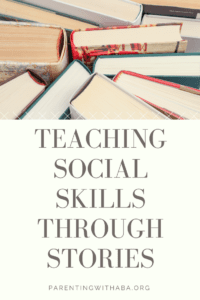 My Little has a hard time with being dropped off somewhere. She is normally an easy going, happy kid IF she’s in her element or I’m there with her. When I drop her off for childcare, she’s a mess. I hate to hear her cry and get a not so awesome report when I get back. I want her to be happy and have fun with other kids! I need to do something proactively to try to make the time away from mom and away from home a more reinforcing experience for my girl.
My Little has a hard time with being dropped off somewhere. She is normally an easy going, happy kid IF she’s in her element or I’m there with her. When I drop her off for childcare, she’s a mess. I hate to hear her cry and get a not so awesome report when I get back. I want her to be happy and have fun with other kids! I need to do something proactively to try to make the time away from mom and away from home a more reinforcing experience for my girl.
My Little loves books. She loves to have us read them to her, she loves to just sit and flip through them and look at the pictures, and she’s recently started telling the stories herself (all babble and hand movements- it’s hilarious). SO I decided to use this preferred activity and make her a book about being dropped off for childcare.
What is a social story you ask?
A social story can be a written or visual guide describing various social interactions, situations, behaviors, skills or concepts. Social stories are a tool that has been used for children with autism for decades. So why not try it with a typical kid who loves stories?
There is a simple formula for writing a social story. The idea is to tell a story without giving commands the whole time.
Here are three types of sentences used in writing social stories:
- Descriptive sentences: set the stage: what occurs, who is involved, what they are doing, and why.
- Perspective sentences: describe the internal status of the person or persons involved, their thoughts, feelings, or moods.
- Directive sentences: are individualized statements of appropriate responses stated in a positive way. They may begin “I will” or “I can”.
A social story should have 3 to 5 descriptive and perspective sentences for each directive sentence. Avoid using too many directive sentences.
Why did I choose this strategy for my tiny human? Because she loves stories and books. I needed a way we could ‘practice’ the situation when circumstances don’t allow for a lot of practice (I’m not going to put her in childcare outside of our normal scheduled times).
If your Little doesn’t love stories and books, it may still work, but you won’t get as much opportunity to review it. Don’t make it an un-fun thing. Reading this “book” or story shouldn’t be punishing or a chore for your kiddo.
I will share my own social story with you and keep you posted on how it goes with my Little!
This is just the tip of the iceberg on social stories. I encourage you to learn more about this strategy. Here are a few good resources to get you started!
Research is cool! (Again, just a small sample)
Adams, L., Gouvousis, A., VanLue, M., & Waldron, C. (2004). Social Story Intervention Improving Communication Skills in a Child With an Autism Spectrum Disorder. Focus on Autism and other developmental Disabilities,19(2), 87-94.
Broek, E., Cain, S.L., Dutkiewicz, M., Fleck, L., Grey, B., Grey, C., et al. (1994). The Original Social Story Book. Arlington, TX: Future Education. www.thegraycenter.org
Gray, C. (2010). What are Social Stories?. In The Gray Centre. Retrieved October 15th 2010, from http://www.thegraycenter.org/social-stories/what-are-social-stories.
Gray, C. (2007). Writing social stories with Carol Gray. Future Horizons.
Gray, C. A. (1998). Social stories and comic strip conversations with students with Asperger syndrome and high-functioning autism (pp. 167-198). Springer US.
Kokina, A., & Kern, L. (2010). Social Story™ interventions for students with autism spectrum disorders: A meta-analysis. Journal of Autism and Developmental Disorders, 40(7), 812-826.
Kuoch, H., & Mirenda, P. (2003). Social story interventions for young children with autism spectrum disorders. Focus on Autism and other developmental disabilities, 18(4), 219-227.
Norris, C., & Dattilo, J. (1999). Evaluating effects of a social story intervention on a young girl with autism. Focus on Autism and Other Developmental Disabilities, 14(3), 180-186.
Recent Comments